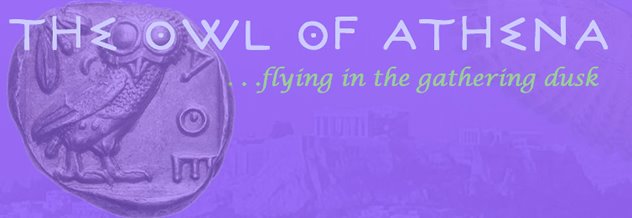 This will probably be an ongoing feature of the Owl of Athena, because I keep happening on items that encourage optimism about the future of education. Such encounters are not as frequent as I'd like in order for me to become generally more sanguine about where we're going, but they do help make up for all the rain we've been having lately, which has damaged some books I had stupidly stored in my garage.
This will probably be an ongoing feature of the Owl of Athena, because I keep happening on items that encourage optimism about the future of education. Such encounters are not as frequent as I'd like in order for me to become generally more sanguine about where we're going, but they do help make up for all the rain we've been having lately, which has damaged some books I had stupidly stored in my garage.The British Library has applied digital page-turning software to a selection of books in its collection, and the results are stunning: The Luttrell Psalter, the Lindisfarne Gospel (with its bejewelled cover in exquisite detail), one of Leonardo's notebooks, Jane Austen's History of England (written by hand when she was thirteen years old)--and more.
The technology, which allows readers to use a mouse to "turn" the pages, makes it almost like actually performing the act of page-turning, except for the texture of the page itself (which you wouldn't be able to feel anyway, because you'd be wearing cotton gloves if you had the text in front of you). The pages aren't merely visible, either; rotate, magnify, zoom, or move the pages about on the screen, and listen to or read commentary on them. For my History of Art & Design I students, this may well prove a valuable resource, when it comes time to solve the final design problem--creating an illuminated manuscript of your own.
The technology serves not only codices (both right- and left-reading), but volumes, like the Dering Roll, a three-meter long scroll of heraldic devices (featured on the Turning the Pages website). If you can't figure out how to use the icons, the "get help" link supplies clear instructions, and you can minimize the tool bar and otherwise "personalise" your experience as well. Unfortunately, only select pages are featured from the books featured on the British Library site, twenty three at the moment, but each one includes rich examples of what the book contains.
Some aspects seem a little silly--like the 3D option on the menu, which is otherwise helpful because it offers a choice of categories: in case, for example, you're interested in Science and Nature but not in Religious texts. Some of the categories are empty, but provide an idea of what will eventually be available.
Alas, the program currently (in its TTP 2.0 form) only works on PCs running XP or Vista. Some small recompense, perhaps, for those who haven't been completely converted to the Mac cosmos.
The same browser application powers the "Explore the Manuscripts" segment of the English Heritage page on Charles Darwin's home, Down House. Five of Darwin's notebooks are available, and all but the Beagle Diary can be viewed in their entirety.
The folks who made this software possible, Armadillo Systems, have developed it (according to managing director Michael Stocking's blog) to "to help museums and libraries provide access and interpretation for their collections." Since many of us will probably never go abroad again, much less obtain access to the rare book collections of the British Library, I can't think of a more noble cause. I also love the emphasis on interpretation, because that's the engine that drives learning, and the broader our perspective (including encounters with primary texts in their original form), the more fluent the interpretation. Now I just have to drive more of my students toward learning Greek and/or Latin, and I can die happy. Some considerable time in the future, I hope.
Image credit: The first page of Matthew's Gospel, from the Lindisfarne Gospel. Wikimedia Commons. For a much more intimate and true-to-life encounter, go to the British Library link mentioned in the post.


